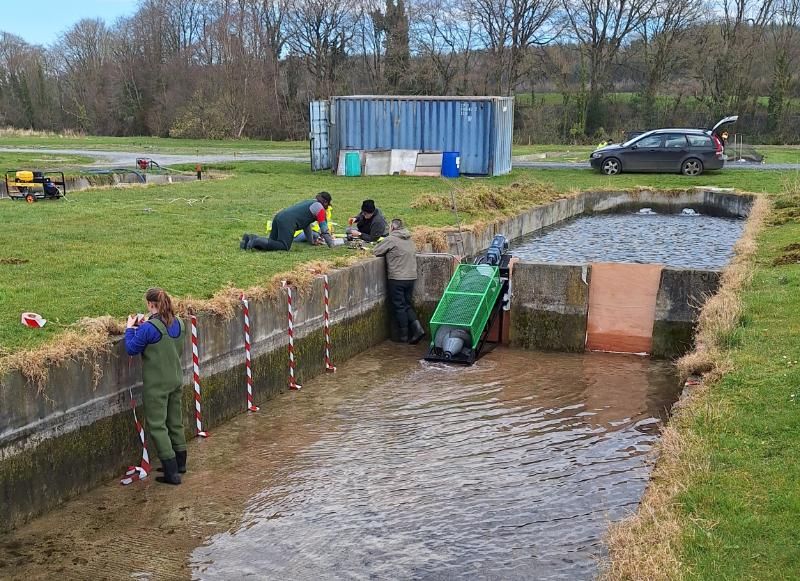A fish-friendly innovation that could turn river barriers into green power stations
Posted on: 25 November 2025
Researchers from Trinity and UCD have designed and road – or “river” – tested a new barrier modification system that enables fish to travel up and downstream while simultaneously generating green energy for local consumption.
Their new prototype, put through its paces at a fish farm in Ireland with both artificial and live fish, suggests it could offer a cost-effective alternative to full barrier removal – potentially offsetting costs by 50–85% while contributing to both EU restoration targets and national renewable energy goals.
The researchers, led by Prof. Aonghus McNabola (who commenced the work while in Trinity’s School of Engineering before moving to RMIT University in Australia), have just published their work in the peer-reviewed journal Energies.
Prof. McNabola said: “The recently adopted EU Nature Restoration law emphasises the urgent need to address the ecological impacts of river barriers, which fragment habitats and disrupt natural flows. However, efforts to remove barriers are often constrained by prohibitive costs, regulatory hurdles, and public opposition.”
“This presents a major problem, which we set out to solve as a team of Engineers and Scientists with the desire to create a win-win solution that benefits the environment and makes a significant financial saving. We will now work to further refine our prototype and are excited about the difference it could make."
“Sustainable hydropower is very important in the broader context of renewable energy strategies as it is relatively untapped and could, with development, provide essential grid flexibility amidst growing solar and wind contributions.”
 The Trinity and UCD team test their prototype unit.
The Trinity and UCD team test their prototype unit.
In Ireland, river barrier removal costs range between €200,000 and €500,000 per structure, underlining that this is a very substantial financial burden – especially given that more than 73,000 barriers are identified nationwide.
And although their removal via traditional approaches would in many cases restore ecological function, it would also eliminate the potential to repurpose these structures for hydropower, thereby reducing opportunities to contribute to the national target of 80% renewable electricity generation by 2030.
Patrick Morrissey, Martin Naughton Assistant Professor in Trinity’s School of Engineering, is another member of the collaborative team. He added: “We wanted to design our river barrier modification system to serve the dual purposes of upstream and downstream fish lift over barriers, while also making it capable of generating electricity by using a fish-friendly pump-as-turbine unit.”
“Under normal flows the unit generates electricity and during low flows it operates in pumping mode to enable safe fish passage.”
Atlantic salmon, European eel and river lamprey are among the most significant species in Irish rivers as they are all strictly protected under the EU Habitats Directive. And while a lot more work needs to take place before a scalable system could be made available, the researchers are optimistic for the future.
Prof. Mary Kelly-Quinn, a collaborator from University College Dublin, added: “Moving forward, we need to conduct more detailed analyses of the renewable energy potential and in-depth fish impact assessments to affirm the viability of the solution.”
“But with further refinements and formal certification this system could play a pivotal role in achieving the dual objectives of the EU Nature Restoration Regulation and the Climate Action Plan 2023, thereby contributing to a more sustainable and ecologically balanced future for the EU.”
The published research can be read on the journal website. It was funded by Research Ireland through the National Challenge Fund under the 2050 Challenge Subscrew Hydro Project.
Media Contact:
Thomas Deane | Media Relations | deaneth@tcd.ie | +353 1 896 4685
